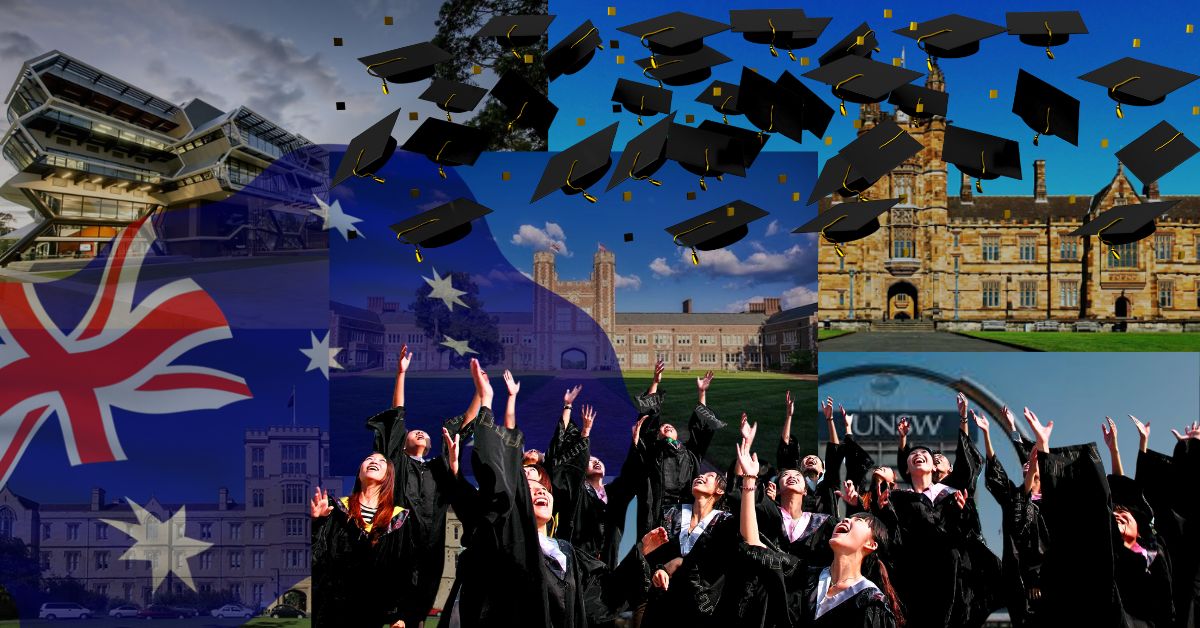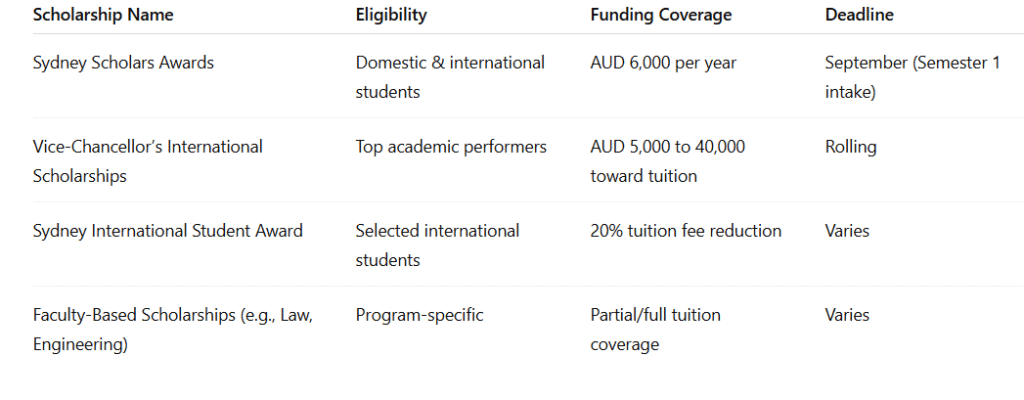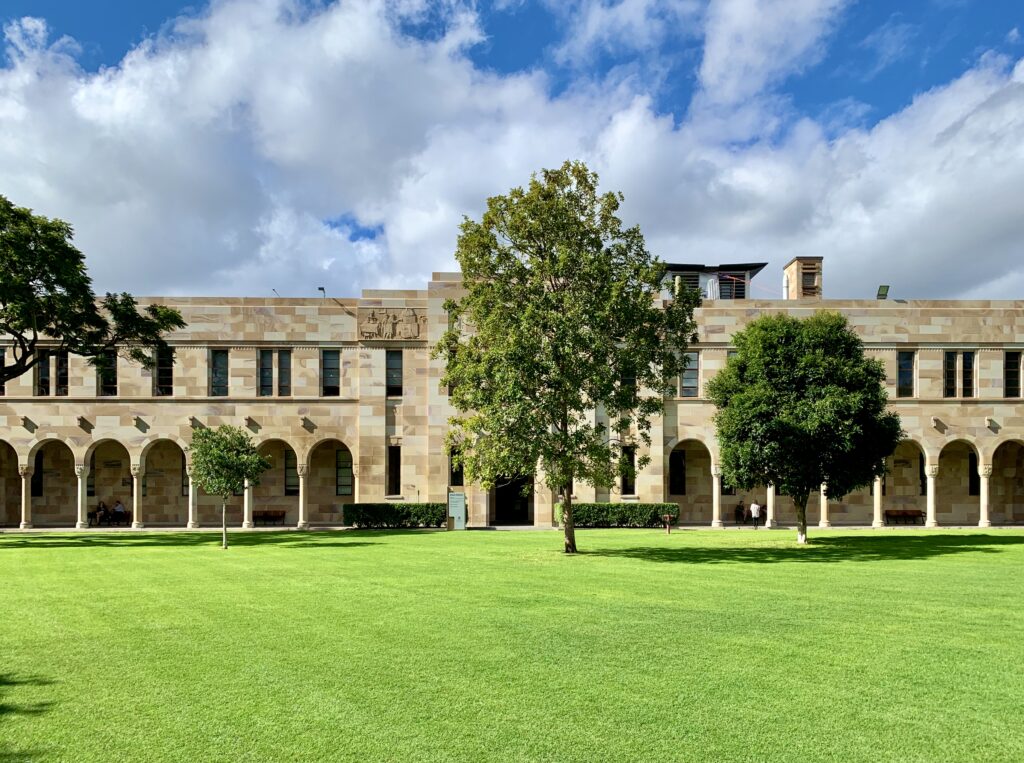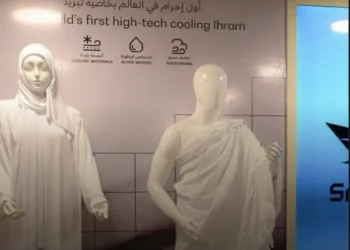1. Introduction
Australia is the largest country geographically and is a continent in itself. It lies in the southern hemisphere, so the weather changes are the same as in Bangladesh. Australia has five of the 30 best cities in the world for students to live in based on student mix, affordability, quality of life, and employment opportunities. The capital of Australia is Canberra. More than 40 universities in Australia are globally ranked for their academics, placements, prospects, and curricula. Known to attract over a million international students annually, studying in Australia is among the top countries and is a favourite study-abroad destination.
The top 5 Australian Universities explored in this article — the University of Melbourne, Monash University, University of Sydney, University of Queensland (UQ), and University of New South Wales (UNSW) —are considered the most in demand by both domestic and international students. The objective is to assist prospective students, especially international applicants, make informed decisions when considering studying in Australia.
2. Why Choose Australian Universities for Higher Study?
There are a lot of opportunities available for students who are looking to study abroad. Several countries around the world are welcoming international students with open arms, offering high-quality education, rich cultural experiences, and diverse opportunities across various sectors. Among these, Australia stands out as a top destination. Every year, students from over 180 countries choose Australia to pursue their education and career goals. With world-class universities, globally recognized degrees, strong research output, and vibrant multicultural campuses, Australia offers an ideal environment for academic and personal growth. There are several compelling reasons why students should consider choosing Australian universities for their higher education journey.
2.1. Cost of Studying in Australia is Cheaper than in other Countries
The cost of pursuing education in Australia is 40 to 60 per cent less than that of the USA or UK, varying with the preferred location. The following table highlights the current cost of studying and living in other popular countries for Bangladeshi applicants:

Based on the above data, it can be concluded that the cost of studying in Australia is lower than that of other top destinations. Meanwhile, Australia’s living costs have increased recently, making it an expensive country for Bangladeshi to study. Applicants can also note that scholarships offered in Australia are more than all of these countries mentioned above to support education in Australia.
2.2. Globally Ranking Universities in Australia
Considering the numbers, quality and living conditions, it is the next “hot” destination after the USA. Over a thousand Indian students and students from all over the world go to Australia to study every year. Students apply to various Australian universities, but most applications are received at Level 1 universities in Australia or G08 universities.
These are some of the most popular Australian universities that make it to Level 1 and Go8 and are ranked among the top 50 universities globally.
2.3 Work While Studying
Australia provides international students with the opportunity to work while studying, which can be a significant advantage in terms of managing living expenses and gaining work experience. Students on a valid student visa are allowed to work up to 20 hours per week during the academic semester and full-time during holidays. This flexibility allows students to support themselves financially without compromising their studies. Many students also find part-time work in fields related to their studies, which further enhances their learning and provides them with valuable industry experience. The ability to work while studying makes Australia a popular destination for international students looking to balance academics with practical work experience.
2.4. High Employability
Graduates from Australian universities are highly regarded by employers worldwide, thanks to the quality of education and industry-relevant skills they acquire during their studies. Australian institutions have strong ties with industries, offering students opportunities for internships, work placements, and industry partnerships that enhance their employability. This exposure to real-world experience allows students to apply their learning in practical settings and gain valuable skills that employers look for. Additionally, the strong emphasis on research and critical thinking further prepares graduates for leadership roles and decision-making positions in their respective fields, boosting their chances of finding rewarding employment after graduation.
2.5. Research Opportunities
Australia is home to some of the world’s leading research universities, providing students with access to state-of-the-art research facilities and opportunities to contribute to groundbreaking studies. Universities in Australia emphasize research-driven education, allowing students to work on projects that tackle global challenges in fields like medicine, technology, engineering, and environmental sustainability. Australian universities are known for fostering a collaborative research environment, often working with industries and global partners to push the boundaries of knowledge. For students with a passion for research, these institutions offer an enriching academic environment where they can learn from and collaborate with experts in their field.
3.How to choose the Right University?
Choosing the right university is one of the most important decisions a student makes when planning to study abroad. It can shape their academic experience, career trajectory, and personal development. In the context of Australia, where numerous globally ranked institutions offer a wide range of programs, the decision can feel overwhelming. However, by considering a few key factors, students can make an informed and strategic choice.
3.1.Field of Study
When selecting a university, the most important factor is whether it offers your desired academic program and specialization. Different universities excel in different fields; for example, the University of Melbourne is renowned for humanities and law, while the University of New South Wales is a leader in engineering and business. It’s crucial to research course content, available majors or minors, and the structure of the program to ensure it aligns with your academic and career goals. Check if the university offers hands-on experiences, research components, or industry links within your field of interest.
3.2. Location and Lifestyle
The city or region where a university is located significantly impacts your student experience. Australia offers diverse settings—from urban cities like Sydney and Melbourne to more relaxed environments like Brisbane or Adelaide. Consider factors such as climate, living costs, transport availability, cultural life, and proximity to beaches, parks, or part-time job opportunities. If you prefer a vibrant city with numerous activities, a university in a metropolitan area might suit you best, while a quieter, affordable city could be ideal for focused study and a balanced lifestyle.
3.3. Tuition Fees and Cost of Living
Tuition and living expenses can vary widely depending on the university and its location. Institutions like the University of Queensland may offer lower tuition than those in Sydney, but the cost of living in cities like Brisbane is also generally more affordable. It’s essential to calculate the total cost of studying, including tuition fees, accommodation, transport, food, and other daily expenses. Many universities offer cost estimators on their websites, which can help you plan and budget accordingly
3.4. Scholarship and Financial Aid Options
Australia offers a wide range of scholarships for international students, provided by both universities and the government. When choosing a university, explore the available scholarships, eligibility criteria, and application timelines. Some scholarships are merit-based, while others consider financial need, regional background, or specific fields of study. Receiving a scholarship can significantly reduce your financial burden and allow you to focus more on your studies.
3.5. Career Support and Internship Opportunities
A good university doesn’t just offer education—it helps prepare you for the job market. Look for institutions that provide strong career support services, such as resume workshops, mock interviews, and career counseling. Some universities have dedicated industry partnerships that provide students with internship opportunities or cooperative education programs (co-ops). These experiences are invaluable for building professional networks and gaining practical experience before graduation.
4. Application process in Australian Universities
Applying to an Australian university as an international student involves several key steps, each of which requires careful planning and timely execution. While the process may vary slightly between institutions, the following general framework applies to most top universities in Australia:
4.1. Choose Course and University
The first step is to research and select a course that aligns with academic background and career goals. Visit university websites to explore course details, admission requirements, tuition fees, and intake periods. Most Australian universities offer two major intakes—February/March and July—though some courses may have additional intake options. Once finalize the preferred course, shortlist a few universities based on factors like ranking, location, cost, and specialization.
4.2. Check Entry Requirements
Each course and university may have different entry requirements, which usually include academic qualifications, English language proficiency, and specific subject prerequisites. For undergraduate programs, you’ll typically need a high school certificate or equivalent. For postgraduate courses, a recognized bachelor’s degree in a relevant field is required. International students must also meet English language requirements, often demonstrated through standardized tests like IELTS, TOEFL, or PTE Academic. Minimum scores vary by university and program.
4.3. Gather Required Documents
Before applying, gather all necessary documents, which usually include:
• Academic transcripts and certificates
• English proficiency test scores
• Passport copy
• Statement of Purpose (SOP)
• Letters of Recommendation (for postgraduate programs)
• Resume or CV (if applicable)
• Portfolio (for courses like design or architecture)
Make sure all documents are properly certified or notarized, as per university instructions.
4.3. Submit Your Application
Applications can be submitted in three main ways:
• Directly through the university’s online portal
• Via the centralized platform: Universities Admissions Centre (UAC) for NSW, VTAC for Victoria, QTAC for Queensland, etc.
• Through an authorized education agent
Fill out the application form carefully, attach all required documents, and pay the application fee if applicable (usually AUD 50–100). Some universities waive the fee during specific periods or for scholarship applicants.
4.5. Receive Offer Letter
If your application is successful, you’ll receive a Letter of Offer—either conditional or unconditional. A conditional offer means you must meet certain requirements (like final exam results or additional documents), while an unconditional offer confirms full admission. Carefully review the offer, including tuition fees, course structure, and terms and conditions. Accept the offer by signing and returning the acceptance form along with the initial tuition fee deposit (often the first semester’s fee).
4.6. Apply for a Student Visa
After accepting the offer and paying the deposit, you can apply for an Australian student visa. Key documents needed for the visa application include:
• Confirmation of Enrolment (CoE)
• Valid passport
- Proof of funds (bank statements, scholarship letter, etc.)
- English language test results
- Overseas Student Health Cover (OSHC)
- GTE (Genuine Temporary Entrant) statement
• Visa processing typically takes 4–6 weeks, so it’s important to apply well in advance.
4.7. Arrange Accommodation and Travel
Once your visa is approved, it’s time to plan your stay. Look into on-campus housing, homestays, or off-campus rentals. University websites often provide guidance on accommodation options. Also, book your flight early to get the best fares and allow sufficient time to settle in before classes start. Attend the university’s pre-departure briefings or webinars to prepare for life in Australia.
4.8. Attend Orientation and Begin Your Studies
Most Australian universities conduct an orientation week (O-week) for new students, where you’ll get to know the campus, meet fellow students, and learn about academic policies, student support services, and local culture. Attending orientation is crucial for a smooth transition. After orientation, you can officially begin your academic journey in Australia.
5. Admission Seasons
Australian universities admission sessions depend on those universities which you choose for your programs. Most common and widely popular universities’ popular admission sessions are February/March and June/ July, some offer November via its limited to certain programs.
5.1. February Intake (Semester 1 – Primary Intake)
The February/March intake is the main and most popular admission season in Australia. Almost all universities and courses are available during this semester, making it the preferred choice for both domestic and international students. This intake aligns with the academic year in Australia and offers the widest range of programs, including engineering, business, medicine, arts, and sciences. Applications for this intake typically open around August to November of the previous year, and students are advised to apply early to secure seats and allow time for visa processing.
5.2. July Intake (Semester 2 – Secondary Intake)
The July intake is the second most common admission season and provides another opportunity for students who may have missed the February deadline or need more preparation time. Although not all programs are offered during this semester, many popular undergraduate and postgraduate courses in business, IT, and engineering are still available. Applications for the July intake usually open around February to April. This intake offers more flexibility and slightly less competition, but students should still plan ahead to meet deadlines and prepare necessary documents.
5.3. November Intake (Summer Term – Limited Intake)
Some Australian universities offer a third or summer intake in November, though it is more limited in scope. This intake is typically available for select courses, online or short programs, and some postgraduate diplomas or business degrees. It’s ideal for students who want to fast-track their studies or align their academic schedule differently. However, course availability, campus services, and housing options might be more restricted compared to the main intakes. Application deadlines usually fall around August to September.
5.4. Rolling or Trimester-Based Intakes (for Specific Programs/Institutes)
Certain universities, especially those that follow a trimester system like the University of New South Wales (UNSW) or Bond University, offer three intakes per year—typically in January, May, and September. These flexible admission schedules are often found in business schools or fast-paced programs that allow students to complete degrees more quickly. If you’re applying to such universities, it’s important to check their academic calendar, as the deadlines and availability differ from the standard semester-based institutions.
Read more: Canada’s Leading 8 Universities: A Comprehensive Academic Overview and Impact Analysis
6.Top Universities in Australia
6.1. University of Melbourne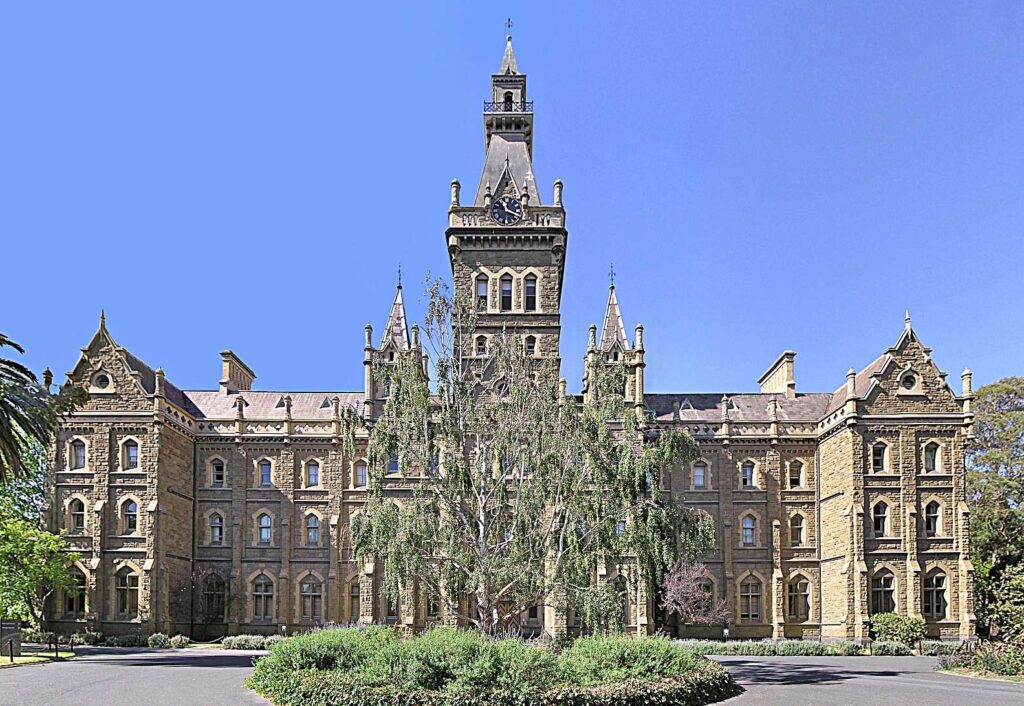
The University of Melbourne is a public research university located in Melbourne, Victoria, Australia. It was founded in 1853, making it the second oldest university in Australia after the University of Sydney. Nestled near the heart of the city in the cultural precinct of Parkville, the university has grown into a prestigious institution known for academic excellence, innovation, and global impact.
For over 170 years, the University of Melbourne has played a central role in Australian education and research. It consistently ranks among the top universities globally, attracting students and researchers from around the world. As of 2024, the university hosts over 65,000 students, of which approximately 44% are international, representing more than 150 countries. The university reported revenue exceeding AUD 3.4 billion in the 2023 financial year, including over AUD 1.4 billion in research income.
College System of the University of Melbourne
The University of Melbourne follows a residential college system. It has 11 residential colleges located close to the main Parkville campus. These colleges offer accommodation, academic and pastoral support, leadership opportunities, and co-curricular activities.
Each residential college fosters a unique culture and sense of community. Some well-known colleges include Trinity College, Ormond College, and Janet Clarke Hall. Although these colleges are affiliated with the university, they operate independently. Students apply to them separately but benefit from a connected learning and support environment.The university’s main campus houses faculties, lecture theatres, libraries, museums, and social spaces, centralizing the learning environment while allowing for interdisciplinary interaction.
Programs and Courses
The University of Melbourne is globally recognized for its strength in Medicine, Law, Engineering, Business, Humanities, and the Creative Arts. It offers a wide range of Undergraduate, Postgraduate, and Research programs. Through its Melbourne Model, students begin with a broad undergraduate degree and then specialize through professional graduate study. The university also offers interdisciplinary programs such as the Bachelor of Biomedicine, Bachelor of Design, and Master of Public Policy and Management. Here are some of the major programs:
• Medicine & Biomedical Sciences (Doctor of Medicine, Bachelor of Biomedicine, Master of Biomedical Science)
• Engineering & Technology (Bachelor of Science in Engineering Systems, Master of Engineering in Civil, Mechanical, Software, etc.)
• Psychology & Mental Health (Bachelor of Psychology, Master of Psychology, Master of Counselling)
• Education (Master of Teaching, Master of Education Policy, PhD in Education)
• Environmental Science (Master of Environment, Bachelor of Science with Environmental Major)
• Data Science & Statistics (Master of Data Science, Bachelor of Science in Mathematical and Statistical Sciences)
• Fine Arts & Design (Bachelor of Fine Arts, Master of Architecture, Master of Urban Planning)
• Economics & Commerce (Bachelor of Commerce, Master of Economics, Master of Finance, PhD in Economics)
• Government & Politics (Bachelor of Arts in Politics and International Studies, Master of International Relations)
• Law (Juris Doctor, Master of Laws, PhD in Law – through Melbourne Law School)
• Business & Management (MBA – Melbourne Business School, Master of Management, Executive MBA)
Admission Process
Undergraduate Admission:
International students applying to the University of Melbourne for undergraduate programs can do so either through the University’s International Application Portal or via the Victorian Tertiary Admissions Centre (VTAC). Applicants must submit their Year 12 or equivalent qualification transcripts (such as A-levels or IB), and demonstrate English language proficiency through tests like IELTS (minimum 6.5) or TOEFL. Some creative and performing arts programs may require a portfolio or audition as part of the application process.
Postgraduate Admission:
For graduate studies, students apply through the University of Melbourne’s Graduate School portal or specific faculty portals. Most programs require academic transcripts, a Statement of Purpose (SOP), a detailed CV, and two or more letters of recommendation. English language proficiency must be proven with IELTS or TOEFL scores. Programs like the MBA or other business disciplines may also require GMAT scores, and research-based programs often demand a proposal and supervisor agreement.
Scholarships of University of Melbourne
Undergraduate
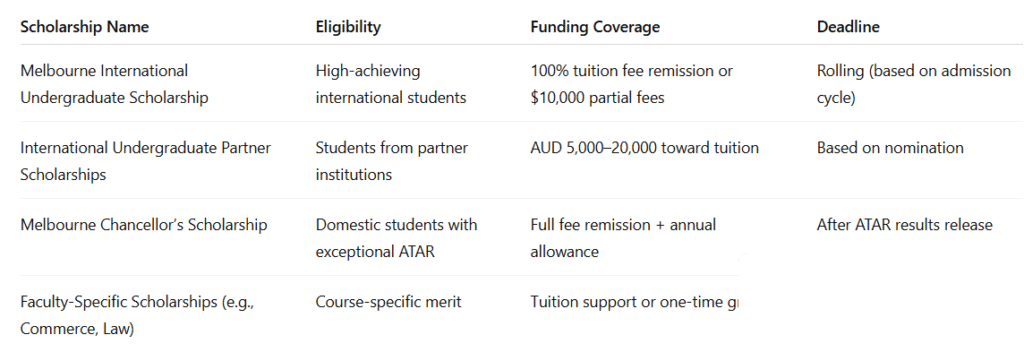
Postgraduate

6.2. Monash University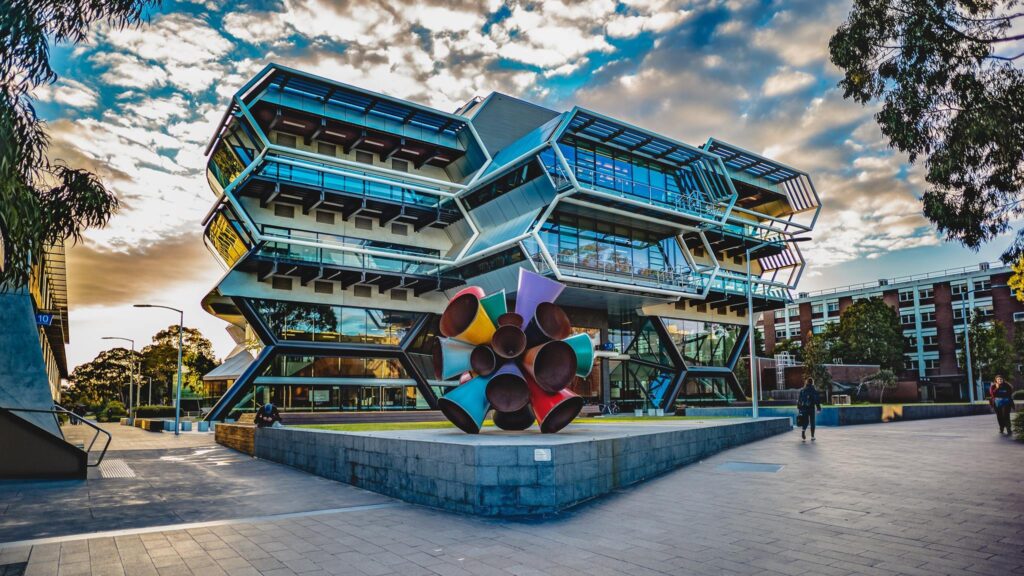
Monash University is a prestigious public research university based in Melbourne, Victoria. Established in 1958, it is named after the famous Australian military leader Sir John Monash. As a member of the Group of Eight (Go8), Monash is known for its cutting-edge research, global connections, and commitment to innovation. It has campuses across Victoria, as well as international campuses in Malaysia, Indonesia, India, and a research center in Italy.
With over 86,000 students and nearly 30,000 international enrollees from over 170 countries, Monash is one of Australia’s largest and most globally active universities. Its annual research income exceeds AUD 555 million, with significant investment in areas like health sciences, sustainable development, and artificial intelligence.
College and Campus System
Monash operates a multi-campus system that includes Clayton (main campus), Caulfield, Peninsula, and Parkville. Each campus has its own academic focus and facilities. On-campus housing is available with support services, student lounges, and recreation centers. The university fosters community through faculty-based societies, clubs, and leadership programs.
Programs and Courses
Monash offers a comprehensive range of undergraduate and postgraduate programs across 10 faculties. Known for its strengths in pharmacy, engineering, IT, business, and medicine, Monash is also acclaimed for its progressive education model and global engagement. Major programs include:
•Pharmacy & Pharmaceutical Sciences (Bachelor of Pharmacy, Master of Clinical Pharmacy)
•Engineering & Technology (Bachelor/Master of Engineering, Renewable Energy Systems, Robotics)
•Information Technology (Bachelor of IT, Master of AI, Master of Cybersecurity)
•Public Health & Medicine (Bachelor of Biomedical Science, Doctor of Medicine)
•Business & Finance (Bachelor of Business, Master of Banking and Finance, MBA)
•Law & Criminology (Bachelor of Laws, Master of Commercial Law, Juris Doctor)
•Education & Learning Innovation (Master of Teaching, Graduate Diploma in Education)
•Arts & Humanities (Bachelor of Arts, Master of International Development Practice)
•Science & Environment (Bachelor of Science in Earth Atmosphere and Environment)
•Design & Creative Industries (Bachelor of Design, Master of Interaction Design
Admission Process
Undergraduate Admission:
Students applying to undergraduate programs at Monash University must submit their application through the Monash Online International Portal or VTAC. Required documents include certified academic transcripts from senior secondary education (such as IB, A-levels, or HSC), English language test scores like IELTS (minimum 6.5), and, in some cases, prerequisite subjects depending on the course. Application timelines vary depending on the intake semester.
Postgraduate Admission:
Graduate applicants can apply via the Monash Admissions Portal for coursework programs or through MyResearch for research-based degrees. Essential documents include a Statement of Purpose, resume, academic records, and at least two recommendation letters. International students must provide English language test results, and programs such as the MBA may also request GMAT scores. Research applicants must submit a proposal aligned with faculty expertise.
Scholarships of Monash University
Undergraduate
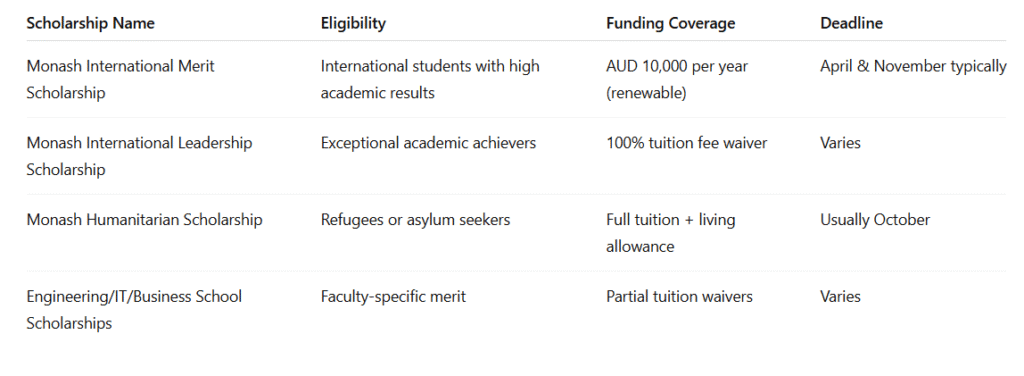
Postgraduate
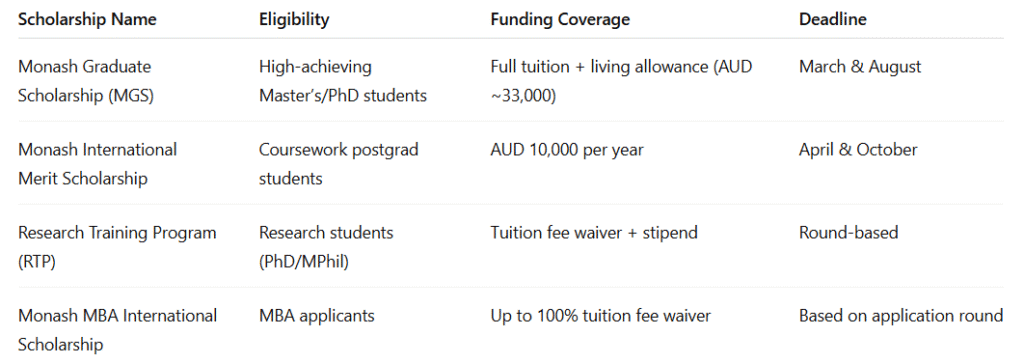
Read More: Biman Rescheduled 3 Major Flight to Avoid Pakistani Airspace
6.3. The University of Sydney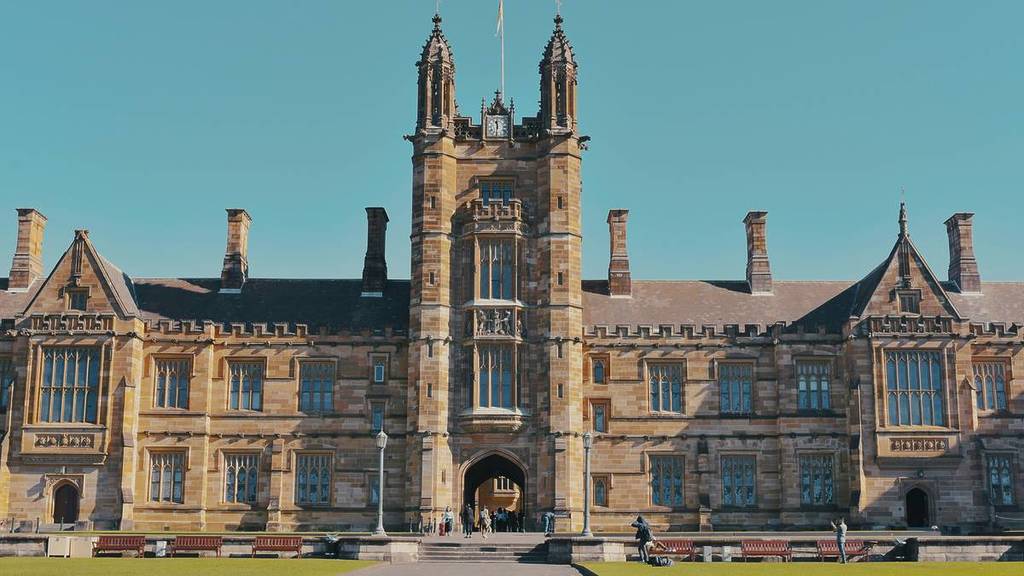
Founded in 1850, the University of Sydney (USYD) is Australia’s oldest university and a global leader in teaching, research, and graduate employability. Located in Sydney, New South Wales, the university is consistently ranked among the top 20 universities worldwide. Its main campus is situated in Camperdown/Darlington, blending historical architecture with state-of-the-art research and learning facilities.Home to over 74,000 students, including 26,000+ international students from 130+ countries, the university is known for producing Rhodes Scholars, Nobel Laureates, and global leaders. It reported over AUD 1.5 billion in revenue in 2023, with a strong focus on interdisciplinary research and innovation.
College and Campus System
The University of Sydney offers both college residences and university-run housing, with historic colleges like St Andrew’s, Wesley, and St John’s offering vibrant academic and social communities. Extensive support services, student clubs, and international student programs enhance the student experience.
Programs and Courses
USYD is a comprehensive university with top-ranked faculties in health sciences, law, business, architecture, and the humanities. It follows a flexible degree structure allowing for combined degrees, double majors, and research pathways. Popular programs include:
• Health Sciences & Medicine (Doctor of Medicine, Bachelor of Health Sciences)
• Veterinary & Life Sciences (Bachelor of Veterinary Biology, Master of Animal Science)
• Law & Policy (Bachelor of Laws, Juris Doctor, Master of Administrative Law)
• Business & Economics (Bachelor of Commerce, Master of Management, Executive MBA)
• Architecture & Built Environment (Bachelor of Architecture, Master of Urbanism)
• Data & Computer Science (Master of Data Science, Bachelor of Advanced Computing)
• Arts & Social Sciences (Bachelor of Arts in Media and Communications, Master of International Relations)
• Engineering (Bachelor of Engineering Honours, Master of Professional Engineering)
• Education & Social Work (Master of Teaching, Bachelor of Social Work)
• Performing Arts & Design (Bachelor of Music, Bachelor of Visual Arts)
Admission Process
Undergraduate Admission:
The University of Sydney accepts undergraduate applications directly via its online portal or through the Universities Admissions Centre (UAC). Applicants must provide their high school completion documents (like IB or A-levels), standardized test scores if applicable, and evidence of English proficiency (IELTS 6.5+ or equivalent). Some degrees in music, architecture, or visual arts require a portfolio or audition submission.
Postgraduate Admission:
For graduate programs, applications must be submitted through the University of Sydney’s Online Application System. Standard requirements include academic transcripts, a personal statement, two academic or professional references, and a CV. English language test scores are mandatory. Some disciplines, such as law or business, may ask for GMAT or GRE results, and research applicants must also prepare a detailed research proposal and seek academic supervision.
Scholarships of The University of Sydney
Undergraduate
Postgraduate

6.4. The University of Queensland (UQ)
The University of Queensland, established in 1909, is a leading public research university located in Brisbane, Queensland. A founding member of the Group of Eight and Universitas 21, UQ is internationally recognized for its research impact, high-quality teaching, and strong graduate outcomes. As of 2024, UQ hosts more than 55,000 students, including over 18,000 international students.
UQ is known for pioneering innovations, such as the development of the HPV vaccine. It boasts over 100 research centers and institutes, with annual research income surpassing AUD 800 million. Its main campus at St Lucia is one of the most beautiful university campuses in the world.
Colleges and Campus Life
UQ has several colleges and residential halls including Emmanuel, Cromwell, and Duchesne College. These offer a strong sense of community, academic mentoring, and personal development. The university provides abundant student services, clubs, sports facilities, and entrepreneurship programs.
Programs and Courses
UQ offers a wide selection of programs with special focus on life sciences, engineering, agriculture, and business. It uses a flexible learning model with interdisciplinary majors and world-class research integration. Major programs include:
• Biotechnology & Biological Sciences (Bachelor of Biotechnology, Master of Molecular Biology)
• Agriculture & Environmental Sciences (Bachelor of Agribusiness, Master of Environmental Management)
• Engineering & Information Technology (Bachelor of Mechatronic Engineering, Master of Software Engineering)
• Health & Medicine (Doctor of Medicine, Bachelor of Nursing, Master of Public Health)
• Psychology & Behavioural Sciences (Bachelor of Psychological Science, PhD in Psychology)
• Business & Management (Master of Business, MBA, Master of International Hotel & Tourism Management)
• Law & Governance (Bachelor of Laws, Master of Governance and Public Policy)
• Education & Training (Bachelor of Education, Master of Educational Studies)
• Arts, Humanities & Communication (Bachelor of Arts, Master of Writing, Editing and Publishing)
Admission Process
Undergraduate Admission:
Students seeking undergraduate admission to the University of Queensland can apply through UQ’s Online Application Portal or through QTAC. International students must present valid secondary school qualifications equivalent to Year 12 in Australia, and English language proficiency (IELTS 6.5 or TOEFL 87+). Certain programs, such as dentistry or veterinary science, have additional selection criteria or competitive entry thresholds.
Postgraduate Admission:
Graduate applications at UQ are processed via the university’s own application portal. Required materials include official transcripts, curriculum vitae, a written Statement of Purpose, and two reference letters. Proof of English language ability through IELTS or TOEFL is mandatory. Select business and professional degrees may require a GMAT or GRE score, and for research programs, a well-developed proposal and supervisor consent are essential.
Scholarships of University of Queensland (UQ)
Undergraduate
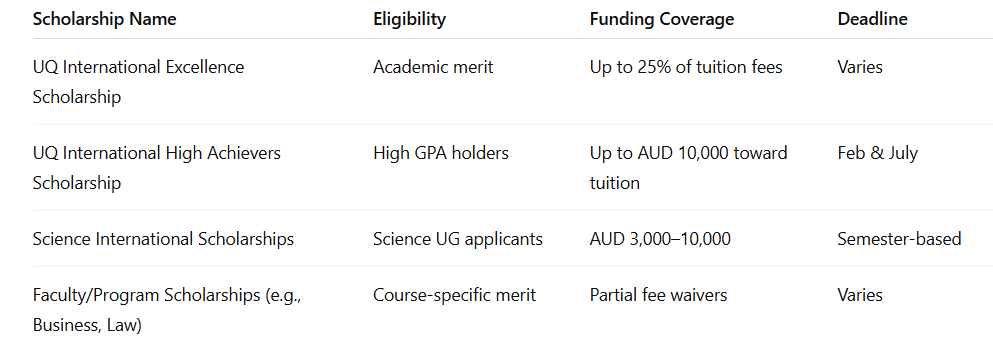
Postgraduate
6.5. University of New South Wales (UNSW)
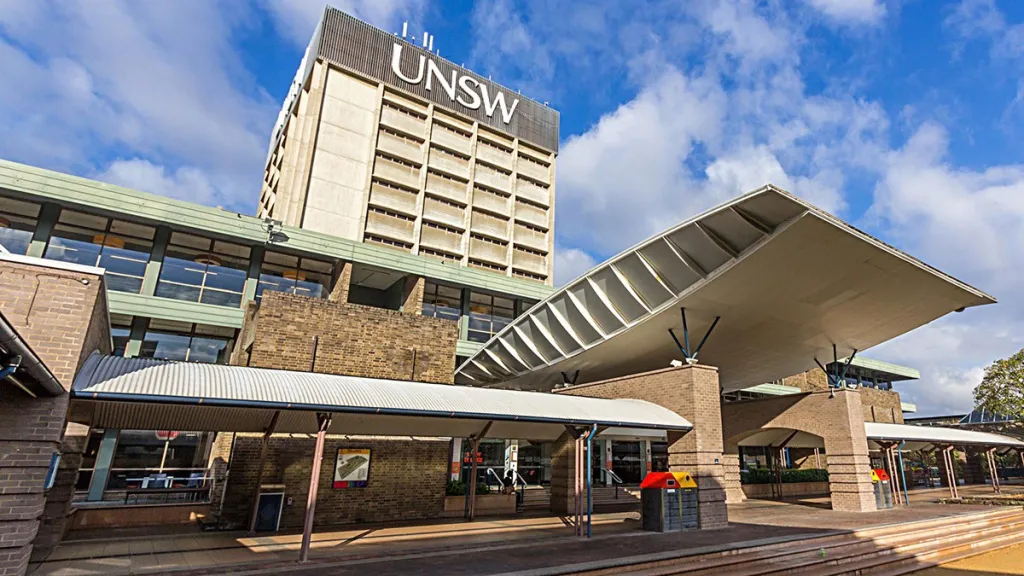
UNSW Sydney is a premier public research university located in Kensington, Sydney. Established in 1949, it has built a strong reputation in engineering, business, law, and technology. UNSW is a founding member of the Group of Eight and a top contributor to global research, innovation, and industry partnerships. It is known for its entrepreneurial spirit and strong ties with employers, ranking highly for graduate employability.
As of 2024, UNSW has over 65,000 students, with more than 30% international. The university is also recognized for its social impact, sustainability initiatives, and leadership in renewable energy research.
Colleges and Campus Culture
UNSW operates a residential college system with options such as New College, Fig Tree Hall, and Goldstein College. These colleges support student wellbeing, leadership, and academic success. The Kensington campus features modern facilities, collaborative learning spaces, maker labs, and student zones.
Programs and Courses
UNSW is known for its trimester-based academic calendar, enabling students to fast-track their degrees. The university excels in STEM, law, business, and architecture. Key programs include:
• Engineering & Technology (Bachelor of Engineering, Master of Biomedical/Electrical/Civil Engineering)
• Computer Science & AI (Bachelor of Computer Science, Master of Artificial Intelligence, Cybersecurity)
• Business & Economics (Bachelor of Commerce, Master of Finance, AGSM MBA)
• Law & Justice (Bachelor of Laws, Juris Doctor, Master of Human Rights Law)
• Built Environment (Bachelor of City Planning, Master of Architecture)
• Medicine & Health (Bachelor of Medical Studies/Doctor of Medicine, Master of Global Health)
• Psychology & Neuroscience (Bachelor of Psychology, Master of Brain & Mind Sciences)
• Arts & Media (Bachelor of Arts, Master of Journalism and Communication)
• Environmental & Climate Science (Bachelor of Environmental Management, Master of Climate Change Adaptation)
Undergraduate Admission:
International students applying to UNSW can do so through the UNSW International Application Portal or via UAC. They must submit certified secondary school transcripts (like A-levels, IB, or other country-specific equivalents), and meet the English proficiency requirements with IELTS (minimum 6.5) or TOEFL. Certain programs, particularly in the arts or design fields, may have extra requirements like interviews or portfolios.
Postgraduate Admission:
Postgraduate admissions at UNSW are handled through the university’s Apply Online portal. The application must include academic records, a detailed SOP, resume, and letters of recommendation. English proficiency is a core requirement. Additionally, GMAT or GRE may be required for courses like MBA, engineering management, or economics. Research students must also submit a proposal and usually identify a potential supervisor.
Scholarships of UNSW (University of New South Wales)
Undergraduate

Postgraduate
Conclusion
Australia stands tall as one of the most desirable destinations for higher education, with its universities consistently ranking among the world’s best. The University of Melbourne, University of Sydney, University of New South Wales (UNSW), Monash University, and the University of Queensland (UQ) not only offer academic excellence but also foster a dynamic learning environment enriched by innovation, multiculturalism, and industry relevance. Their globally recognized programs, state-of-the-art facilities, and diverse student communities empower learners to thrive both academically and professionally.
From flexible admission processes to generous undergraduate and postgraduate scholarships, these institutions are well-equipped to support talented students from around the globe, including those from Bangladesh. Moreover, Australia’s welcoming immigration policies and post-study work opportunities make it a strong launchpad for long-term career growth. By choosing to study at one of these top Australian universities, students are not only investing in a degree but also embracing a transformative journey that can shape their global future.
References:
Share via:

